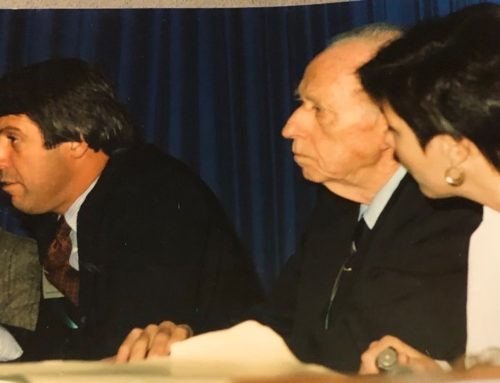by David Bork
George Washington Vanderbilt II (November 14, 1862 – March 6, 1914) was a member of the prominent United States Vanderbilt family, which had amassed a huge fortune through steamboats, railroads, and various business enterprises. Born in 1862, he had the vision of a self-sustaining country house.
He continued buying land in the rolling mountains of North Carolina until the estate eventually encompassed 125,000 acres, 228 square miles (591 km2). It would have taken a week to travel on horseback around the property. Modeled after the great French Châteaux of the Loire Valley, the 250-room mansion was the largest of all the Vanderbilt houses. It remains the largest privately owned home in the United States and one of the most prominent remaining examples of the Gilded Age.
Vanderbilt used his entire inheritance to construct Biltmore, the largest home in the United States. I just returned from conducting a work session for a prominent East Coast family, held at the Inn at the Biltmore, a 211 room, four star hotel constructed by his descendants.
George W. Vanderbilt set the stage for his heirs and today, the fourth and fifth generations are facing the challenge presented by his vision. His fundamental vision had the following components:
- Use new and improved methods of working the land and preserve the forests on the vast estate. Today, that would be called sustainable agriculture.
- Be willing to take risks was the second element – he invested majority of his inheritance in structure.
- Innovate – he was one of the first to use electricity, plumbing, central heating, elevators, telephone, revolutionary farming practices and forest management.
- Community Service – He knew that he needed an educated workforce in his then remote location, thus creating schools for his employees and their children.
- Quality – Nothing but the best, uncompromising quality.
The house has been a magnet for millions of people eager to see the legendary property and experience the hospitality first offered in 1895 by George and Edith Vanderbilt. In addition to the home, the estate features timeless landscape design by Frederick Law Olmstead, designer of Central Park in New York City.
Today’s success of Biltmore can be attributed to his grandson, William A.V. Cecil, known as “Mr. C..” who remains Chairman of the Biltmore Companies which are now run by his son, William A.V. Cecil, Jr, and daughter, Diana Cecil Pickering.
When Mr. C took responsibility for running the estate in the early 1960s, it was losing about $250,000 a year. His older brother operated the dairy, which produced about $25 mm in revenue. Some might say the older brother had the major responsibility while Mr. C “dabbled” with the mansion and the visitors. Ninety thousand acres had been given to the US to create the first national forest East of the Mississippi River. The brothers had a falling out and elected to divide the estate, with Mr. C taking the mansion and 8,000 surrounding acres. He had to make it profitable.
What followed was a major transformation and is a testimony to the creative ingenuity and raw entrepreneurialism of Mr. C. He had the historic structure, filled with remarkable collections of fine art, rare books and furniture, in itself an attraction, and set out to create a destination attraction with multiple activities to generate income. He build a graceful village with shops, restaurants tourist activities: cycling, horseback riding, off road driving, fishing, hiking trails and a host of other activities attractive to the visitors.
In 1968, the Biltmore as an attraction had turned a profit: $16.24! The elder Cecil’s willpower and drive pushed the estate forward as he developed market strategies, restored many parts of the property and add a vineyard and a winery in the 1985, against all conventional wisdom. When Bill Jr. took over as CEO in 1995, the estate’s centennial year, revenues were about $30mm and there was a modest profit.
Fast forward: Bill Jr. and Dini led the way in building the inn in which I stayed and amped up marketing efforts, public relations systems and ultimately, the occupancy of the inn, the traffic in shops and restaurants and visitors to the mansion. Mr. C’s health is declining but he continues to serve as Chairman of Biltmore and advises his children.
While Bill Jr. and Dini are making the most of the business, they are also concerned about the future the Biltmore and their children’s role in that future. There are five children, three are Bill’s and two belong to Dini. Bill and Dini are equal owners. When their ownership passes, there will be three owners, each with 1/6th and two owners, each with 1/4th of the ownership. This is but one of the complex matters they must address.
In the family business vernacular, a “Cousins Consortium” will own the business. This means that they must establish a governance systems for how they will operate. It includes shareholder agreements, employment agreements, decision-making models, avenues for exiting the business – something quite likely in this or the next generation. The cousins range in age from 17 – 31. It is fortunate that all of the cousins are intelligent, ambitions and well educated. They are pursuing education and careers that suggest they will be responsible owners of the George Vanderbilt legacy.
Dini and Bill Jr. have introduced strategic planning and disciplined re-investment in the business. They have elevated the risk tolerance with larger investments in business opportunities such as the Inn and the village they created. Recognizing the need, they now have governance structures for the business and the family. Most importantly, they recognize that their success is grounded in the quality of their communications and the teamwork necessary to run the business.
In their activities with the next generation they are focused on a disciplined approach to goal setting, energizing the competitive drive in their children – a quality they recognize as essential to continuity of the enterprise, teaching and modeling effective teamwork, good communication and a global perspective. They believe that this is a sound beginning and trust that it will serve as the foundation for future generations.
What can we extrapolate from this brief story? While the mansion opened in 1895, this business story really begins with Mr. C. He was the younger brother and is seems, mostly treated with a “pat on the head,” by his older brother. “You play with the mansion and I will run the dairy, the REAL business.” Only when they split the holdings did Mr. C’s entrepreneurial spirit become apparent. He was determined to make the mansion pay its own way. Thus, this is really a story of an entrepreneur who inherited an asset and turned it into a profitable business. His children are taking it to the next level and it they who must address all the family and business continuity issues. They have a big challenge ahead of them for there is much that must be done to assure their success. We can only wish them well!
Does Your Family Business Need Help?
Family Business Matters has extensive experience assisting family businesses. With many decades of experience, we understand the wide variety of challenges that families face as they work together to build, grow and sustain a thriving family business generation after generation. Through conferences, continuing education programs, family business retreats, speaking engagements and private family business consulting services, Family Business Matters has assisted more than 450 family-owned businesses around the world chart their way through family business issues of all shapes and sizes.
Contact Us
For more information on how Family Business Matters can help your family business survive and thrive, please contact us today at (970) 948-5077.






